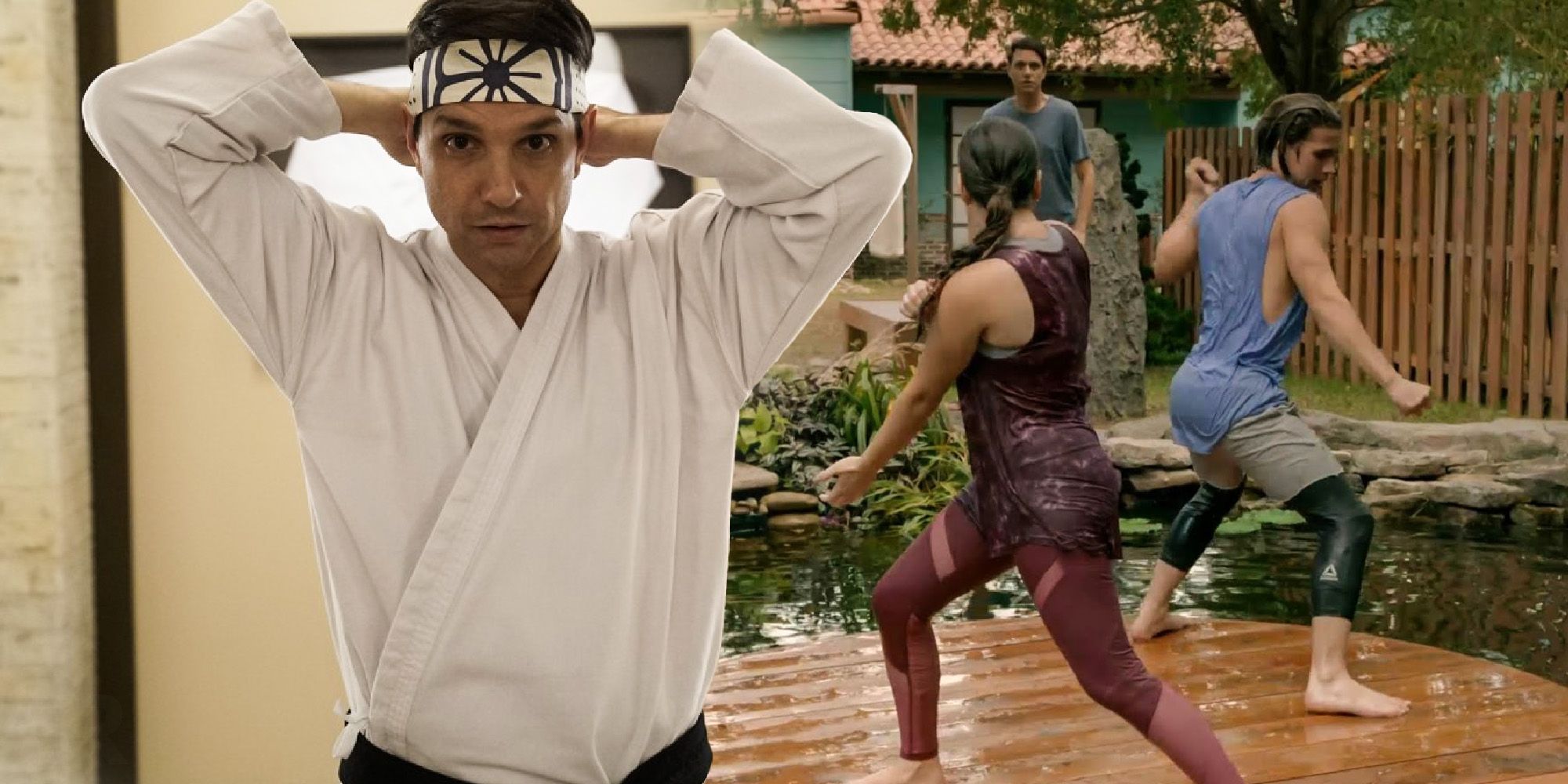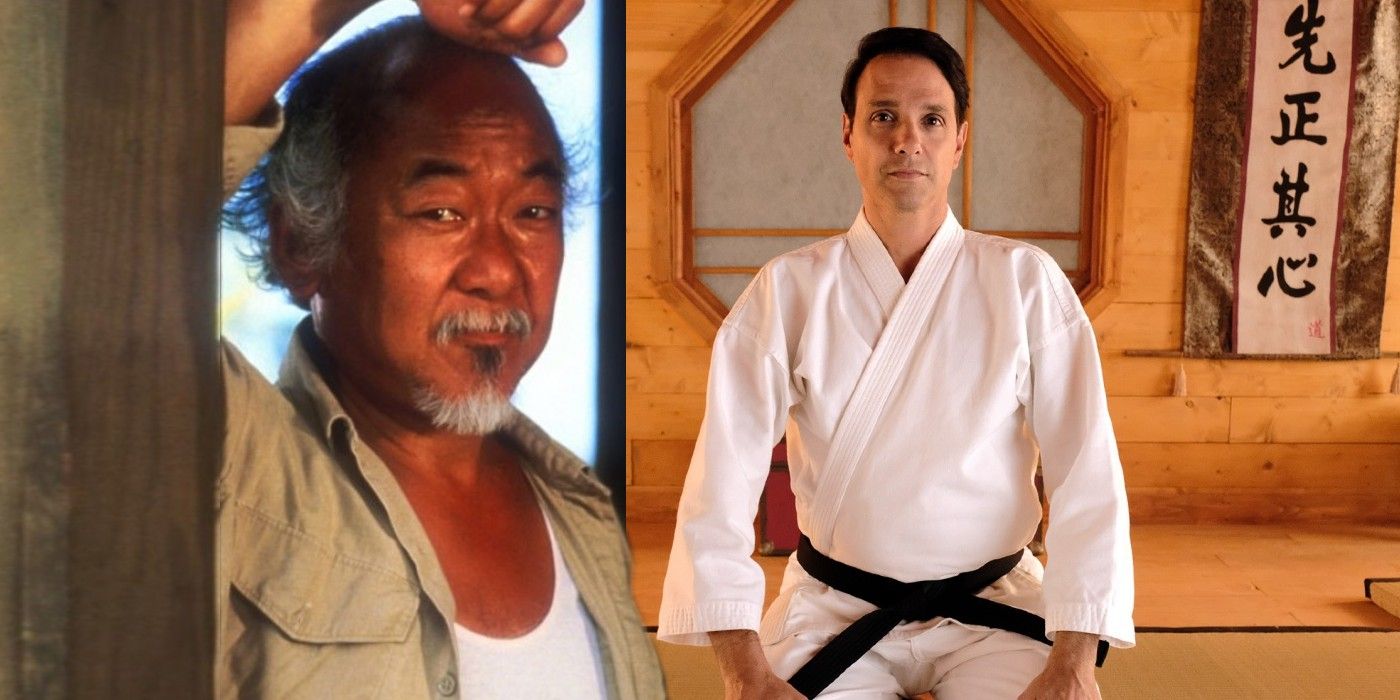In Cobra Kai, Daniel LaRusso (Ralph Macchio) teaches his students a style of martial arts based on the real-life disciplines like kata and Gōjū-ryū, both of which originated in Okinawa. Most of LaRusso's teachings are derived from his sensei, Mr. Miyagi (Pat Morita), who stressed that all martial arts should work in service of higher philosophical principles.
Fans of the series may remember that in The Karate Kid (1984), LaRusso's sensei, the quasi-magical Mr. Miyagi, often speaks of his experiences growing up in Okinawa, where he learned several martial arts that are foundational to karate, including kata. Although it's never mentioned directly in the Karate Kid films, another style that arose in Okinawa was Gōjū-ryū, a name that suggests "hard" and "soft" approaches flowing together in harmony. Even Miyagi's name hints at the influence of this martial arts form, as the originator of Gōjū-ryū was named Chōjun Miyagi.
Related: What Happened to Daniel Between Karate Kid & Cobra Kai
When Miyagi demands that LaRusso paint his fence and "wax on, wax off" his car collection in The Karate Kid, LaRusso suspects he's being exploited for free labor. On the contrary, Miyagi is instilling LaRusso with the muscle memory needed to parry and redirect incoming strikes (the basics of Gōjū-ryū). Miyagi also teaches LaRusso the fundamentals of kata - a foundation-building practice based on choreographed, fluid motions. Early in LaRusso's training, Miyagi tells him, "Balance is key. Balance good, karate good. Balance bad, better pack up, go home." Miyagi even demands that young LaRusso practice throwing kicks while negotiating breaking waves, while balancing atop a narrow piling, and while perching on the bow of a very tipsy rowboat. If that wasn't difficult enough, The Karate Kid Part II sees Miyagi swinging a massive, barbed block-and-tackle at LaRusso to test his balance. Miyagi's synthesis of Okinawan combat styles sets the table for LaRusso's approach in Cobra Kai.
In season 1 of Cobra Kai, LaRusso honors Miyagi's traditions by telling young protégé Robby Keen (Tanner Buchanan) that his karate, like Miyagi's, is kata-based. LaRusso and Robby end up practicing kata on a number of different surfaces, including rock formations, a dock, and several other platforms that echo scenes from The Karate Kid movies. As LaRusso tells Robby, "You may have the moves, but none of that matters unless you have balance." Clearly, this line attempts to refigure Miyagi's wisdom from The Karate Kid.
In season 2, LaRusso further extols the virtues of harmony in an internet ad for his dojo: "Inner peace. Focus. Balance. These are just some of the skills that you will master when you join Miyagi-do Karate." This insistence on balance pervades LaRusso's teachings. One of Cobra Kai's most iconic training sessions involves LaRusso directing his daughter Samantha (Mary Mouser) and Robby to practice karate moves on an unstable platform floating atop a koi pond. This scene reinforces many of the water-based training exercises Miyagi imposed on LaRusso. LaRusso's "hard" and "soft" Gōjū-ryū-based ethos becomes even more apparent in Cobra Kai as he trains characters like Robby Keene and Demetri (Gianni Decenzo) to "wax on/off" and perch atop a wide variety of perilous structures, thus instilling them with the fundamentals of kata and Gōjū-ryū.
It stands to reason that Miyagi-do's blend of kata, Gōjū-ryū, and other Okinawan forms will continue to inform season 3 of Cobra Kai. It's also important to remember that while the LaRusso's teachings are founded on true Okinawan martial arts principles, the show is still primarily an entertainment vehicle, and takes many fictional liberties. Nonetheless, Cobra Kai remains remarkably faithful to the disciplines advocated by Miyagi in the original Karate Kid saga.


